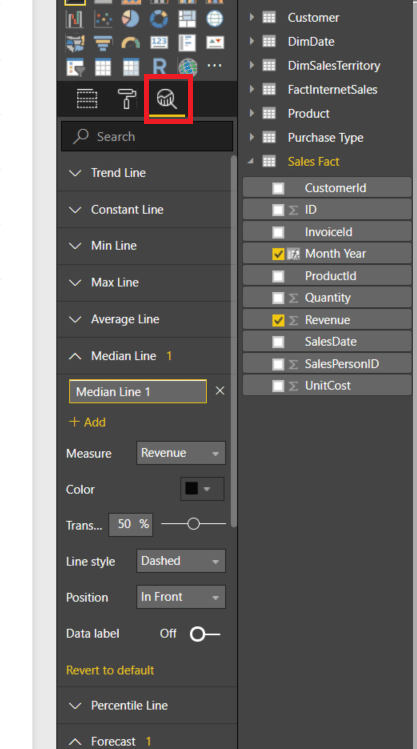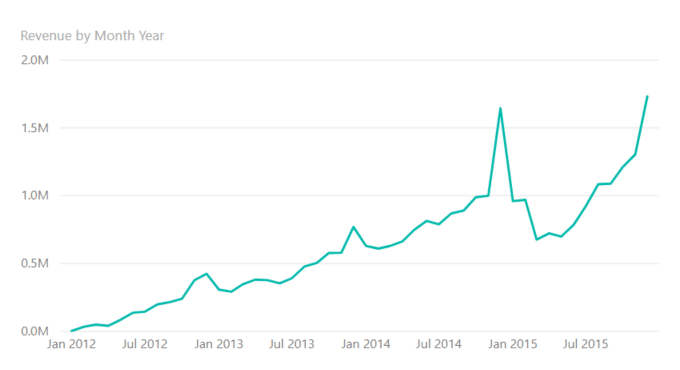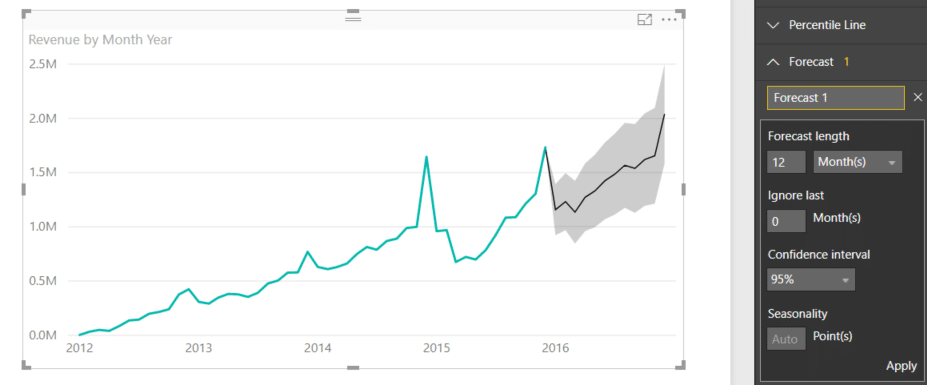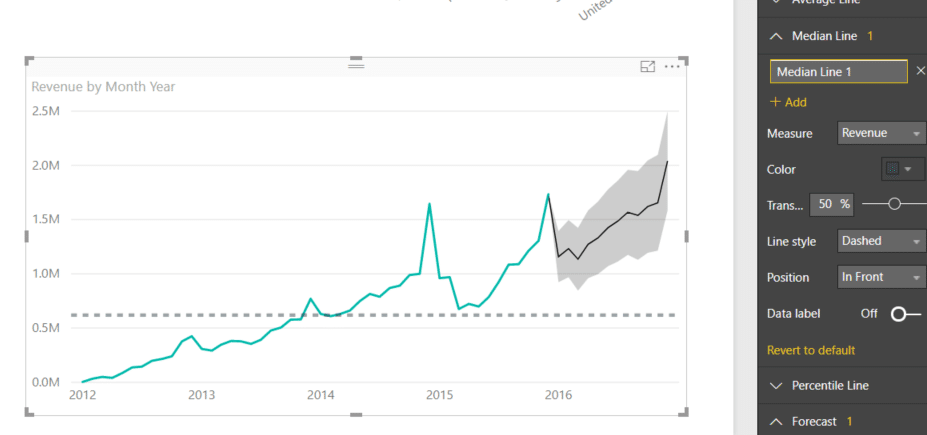Take Advantage of Forecasting in Power BI with the Analytics Pane
In order to take advantage of forecasting in Power BI, you should be aware of a cool feature in the product called the Analytics pane. The Analytics pane allows you to add dynamic reference lines to your visuals to provide focus for important trends or insights. It is found in the Visualizations area of Power BI Desktop.
In our example today, we’ll see how we can add a Median line and have Power BI Forecast revenue for us. The visual below contains revenue by Month and Year. We want the ability to quickly see a forecast for the next twelve months of what the revenue will look like.
If we select the visual and go to the analytics pane we can see a Forecast option. Let’s click on Add, set the forecast length to 12 Months with a 95% Confidence Interval and click Apply. You’ll notice now that we have a forecast line after our data ends with the shaded grey area being our confidence interval.
Next, let’s add median line by going to Median Line in the Analytics pane and just click on Add. We’ll change the color to dark grey as shown below.
I haven’t found any articles describing what algorithm the forecasting feature uses in Power BI. However, there is a detailed explanation of the algorithm Power View uses for forecasting. Forecasting in Power BI is based on an established suite of methods for time series prediction called exponential smoothing. There are two versions provided in Power BI, one for seasonal data (ETS AA), and the other for non-seasonal data (ETS AAN). Nonetheless, this is a quick and easy way to look at your forecast in Power BI. I suggest you validate the methods using R or Python and see if you notice any differences between Power BI and the R/Python libraries. To manipulate visualizations of existing data to different time periods, check out Power BI Time Intelligence.
Under the terms of this license, you are authorized to share and redistribute the content across various mediums, subject to adherence to the specified conditions: you must provide proper attribution to Stoneridge as the original creator in a manner that does not imply their endorsement of your use, the material is to be utilized solely for non-commercial purposes, and alterations, modifications, or derivative works based on the original material are strictly prohibited.
Responsibility rests with the licensee to ensure that their use of the material does not violate any other rights.









